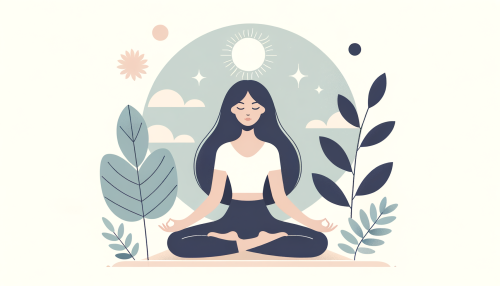Introduction
In the grand tapestry of existence, our surroundings play a pivotal role in shaping our wellness and overall well-being. The aesthetics of our environment, the beauty and harmony that we perceive, can profoundly influence our mental, emotional, and physical health. This article delves into the intricate relationship between wellness aesthetics and finding meaning in our surroundings.
Environmental Influence

The environment we inhabit is not merely a backdrop to our lives; it is an active participant, subtly influencing our thoughts, emotions, and behaviors. The aesthetics of our surroundings can either enhance or diminish our sense of well-being. A cluttered, disorganized space can induce feelings of stress and anxiety, while a clean, orderly, and aesthetically pleasing environment can promote relaxation and peace of mind.
The influence of our environment extends beyond our immediate physical surroundings. The natural world, with its diverse landscapes and ecosystems, can have a profound impact on our mental and emotional health. Research has shown that spending time in nature can reduce stress, improve mood, and enhance cognitive function. The aesthetic beauty of a forest, a mountain range, or a tranquil beach can evoke feelings of awe and wonder, fostering a deeper connection with the natural world and promoting a sense of peace and well-being.
Our social environment also plays a crucial role in our wellness. The quality of our relationships, the communities we belong to, and the cultural norms and values we adhere to can significantly influence our sense of self-worth and belonging. A supportive, inclusive, and aesthetically pleasing social environment can enhance our mental and emotional health, fostering a sense of connection and shared purpose.
Aesthetic Appreciation
Aesthetic appreciation is the ability to perceive and appreciate beauty in our surroundings. It involves a deep, mindful engagement with the world around us, allowing us to derive pleasure and meaning from the aesthetic qualities of our environment. This appreciation can extend to various aspects of our surroundings, including the natural world, built environments, art, music, and even the mundane aspects of everyday life.
Aesthetic appreciation is not merely a passive experience; it is an active process that involves our senses, emotions, and intellect. It requires us to be present and attentive, to engage with our surroundings in a meaningful way. This engagement can foster a deeper connection with our environment, enhancing our sense of belonging and well-being.
Aesthetic appreciation can also serve as a form of self-care. By taking the time to appreciate the beauty in our surroundings, we can cultivate a sense of gratitude and contentment, reducing stress and promoting mental and emotional health. Furthermore, aesthetic appreciation can foster creativity and innovation, stimulating new ideas and perspectives.
Wellness Integration
Wellness integration involves incorporating wellness practices into our daily lives, creating a holistic approach to health and well-being. This can include a variety of practices, such as regular physical activity, healthy eating, mindfulness meditation, and stress management techniques. However, wellness integration also involves creating an aesthetically pleasing environment that supports our health and well-being.
Creating a wellness-oriented environment involves more than just physical comfort; it also involves aesthetic considerations. This can include the use of color, light, texture, and space to create an environment that is visually pleasing and conducive to relaxation and well-being. For example, natural light can enhance mood and productivity, while the use of calming colors can promote relaxation and reduce stress.
In addition to creating a visually pleasing environment, wellness integration also involves creating a space that supports our physical health. This can include ergonomic furniture, air quality considerations, and access to healthy food and physical activity opportunities. By creating an environment that supports our physical and mental health, we can enhance our overall well-being and quality of life.
Conclusion
In conclusion, the aesthetics of our surroundings play a crucial role in our wellness and well-being. By cultivating an appreciation for beauty and creating an environment that supports our health, we can enhance our quality of life and find deeper meaning in our surroundings.





